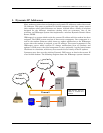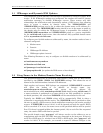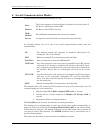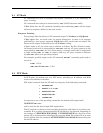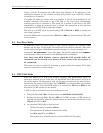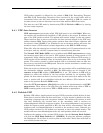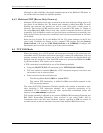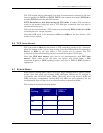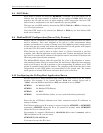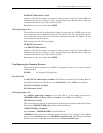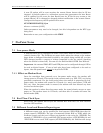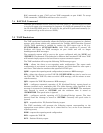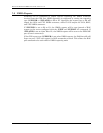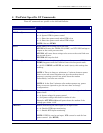
Raven and PinPoint CDMA User Guide Version 1.12
AirLink Communications, Inc. Page 32 March 24, 2004
Although it adds reliability, the simple implementation of the Reliable UDP mode in
the modem does not check for duplicate packets.
6.4.3 Multicast UDP [Raven Only Feature]
Multicast UDP results in any data received from the host serial port being sent to all
the clients in the Modbus list. The remote port number is taken from S53. To avoid
flooding the network, the packets are sent to each client with a 20ms pause in
between. The receipt of UDP packets works as in normal UDP mode (i.e. bound by
the value S53 and/or AIP). Since it may take a while to transmit the data to all hosts
(especially if all 20 Modbus entries are used and name resolutions are required), new
data received from the host port is buffered until current transmissions to all hosts
are finished.
Enter the list of target IPs in the Modbus IP list. The index numbers in the IP list
aren't used. Configure the Raven as for a normal UDP session. Set the Startup
Mode Default to 3, and the UDP Mode Default to 8 [ATMD83]. Configure the
Destination port to match the device port of the remote modems.
6.5 TCP PAD Mode
When the modem is in a TCP session, all characters received on the serial port are
assembled into TCP packets and sent to the mode’s remote IP address/port, and any
packets received from the remote end of the TCP connection are disassembled and
dumped onto the serial line. Note that DTR needs to be asserted (or S211=1 or &D0)
by the host before a TCP session can be entered.
A TCP connection is established by one of the following methods:
• Using the Dial TCP (DT) AT command (as in, ATDT192.168.3.23/3456)
• TCP auto answer is enabled (S0=1|2), a TCP connection request is received, and
the modem is not in a data session.
• Data is received on the serial port and
- The Startup Mode Default (MD) is 4 (auto TCP)
- The remote TCP destination, as defined in S53, successfully responds to the
TCP connection request.
The value of S7 (TCP Connection Timeout) specifies the number of seconds to wait,
after initiating a TCP connection attempt, for a successful connection to be
established. If the connection has not been successfully established before the
timeout occurs, ERROR/BUSY is returned.
TCP packet assembly is affected by the values of S50 (PAD Forwarding Timeout) and
S51 (PAD Forwarding Character). Data received in the serial buffer will be
transmitted when the idle inter-character timeout specified in S50 (in tenths of
seconds) occurs or when a character is received that matches S51 (if non-zero).




